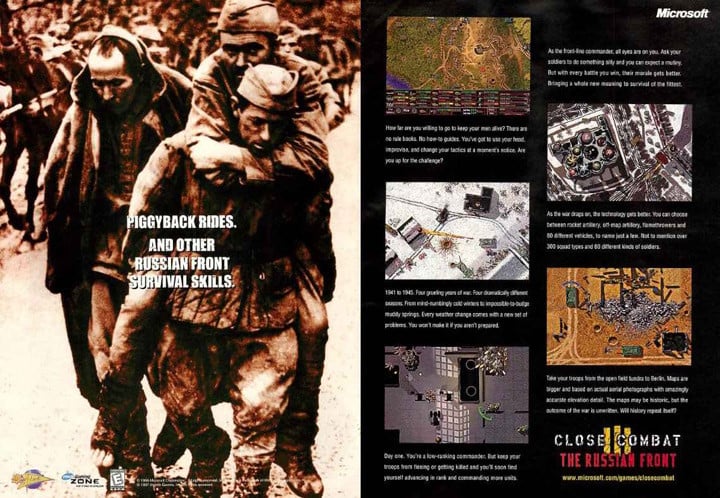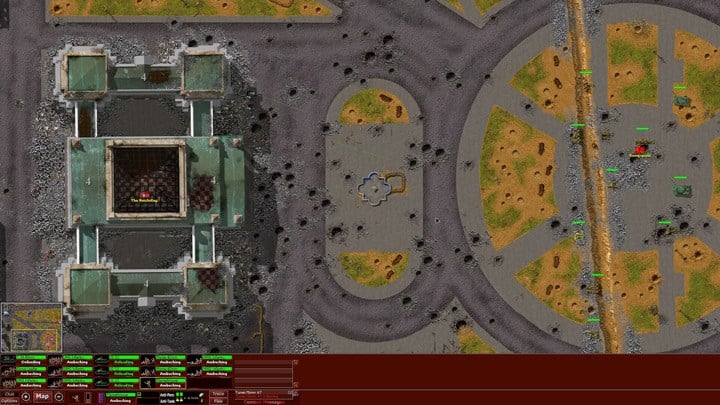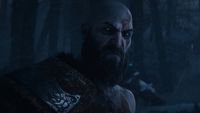Close Combat 3, Best Wargame of Its Time, Focused on Soldier Psychology and the Eastern Front
With ratings of 90%, Close Combat 3 was one of the best-rated strategy games of 1999. No wonder - it was the peak of popularity for the series, which wanted to show pixelated soldiers as something to be scared of.

In the first half of the 90s, if someone was looking for realism in a strategy or tactical game, they usually ended up in a turn-based game like Steel Panthers. Real-time gameplay was the domain of RTSs such as Command & Conquer and Warcraft II. It was only in 1996 that Atomic Games, with the support of Microsoft, proposed a completely new combination - Close Combat, creating a new subgenre of Real-Time Wargames (RTW).

"Lead your men through the greatest and bloodiest war of the century"
The most important game in the history of this series was Close Combat III: The Russian Front - a title widely praised and awarded in 1999, which sold over 100,000 copies. CC3 was in many ways the essence of what the series had to offer, and the point from which it all went downhill. The series' fundamentals in CC3 remained the same: we continued to lead a small number of units, almost at the company level, in real-time on maps covering almost 2 square miles. The landscape played a crucial role; every pixel had specific characteristics that could determine if a soldier on it was visible or more resilient to gunfire. The buildings were marked with numbers, symbolizing the floors. Unfortunately, it wasn't possible to go down to the lower floors of the building.

The series' slogan was "Take control of men who behave like real soldiers," because Close Combat developed its AI psychological model based on research on the impact of combat stress conducted by Dr. Steven Silver from Temple University. Stress, fatigue, ammunition levels, and experience all influenced how and whether soldiers carried out orders. The AI system was particularly noticeable in the case of CC3, which focused on the Eastern Front during World War II, especially when it came to poorly trained Russian troops from 1941. In the game, there were often mass desertions of entire Soviet units after a few shots were fired, or reckless charges by overeager recruits. What was completely lacking in all installments of the CC series was pathfinding and tank behavior. They required strong micromanagement, often exposing themselves to fire at the worst moment.
Beautiful 2D in the times of chasing after 3D
The Russian Front also introduced a campaign system that appeared only in this installment of the series. We played as Germany or the USSR from 1941 to 1945, replenishing losses and exchanging equipment for newer ones in the shopping panel. If things went well, some soldier could survive the entire war, although it was unlikely. One of the criticisms of the game was the fact that even if the Germans won the campaign, they still had to lose it - it always ended with the battle for the Reichstag in Berlin. It was also the first installment in the series to introduce artillery. At the start of every battle, only falling projectiles appeared according to the scenario, and we had little control over the shelling. The 2D graphics used in Close Combat III have aged well. Thanks to Microsoft, the game now runs smoothly at a resolution of 1280 x 720. The maps drawn for the series were marked by tremendous attention to detail, and when juxtaposed with aerial photographs from that time, you can truly recognize the effort that was put into their making.

Audio for scaring neighbors
If someone were to point out the most important feature of Close Combat from memory, undoubtedly the sound would come to mind. The Russian Front's audio setting continues to be a leading example of "how war can sound on a computer screen" to this day. The soldiers' shouts mix with the MG-42's rattle and falling mortars, creating a sound wave that shatters the neighbor's bathroom wall. In terms of mechanics and interface improvements, players celebrated the inclusion of new orders - ambush and defense, which made it easier to control when troops start firing, as well as in the case of defense, allowing you to simply leave a squad on its own.

What was next?
Close Combat 3 was the last installment in the series released by Microsoft. SSI took over the remaining two installments - Battle of the Bulge and Invasion Normandy. The fourth and fifth installments emphasized huge campaigns on the strategic map; unfortunately, despite the increase in ambition, the battle section of the game didn't evolve, and many problems, such as vehicle pathfinding, remained unresolved. Close Combat 3 has been refreshed in a version released under the Matrix Games banner – Close Combat: Cross of Iron. In this instance, the changes affected the game's technical aspects and various details, including explosion animations imported from Close Combat 4.
How to play Close Combat 3: The Russian Front today?
Both Close Combat 3 and Close Combat: Cross of Iron are available on GOG and Steam (for $5.04 in the first case). Both games frequently go on sale; for instance, you can buy Cross of Iron for $14.46.
0

Author: Adam Kusiak
He began working at Gamepressure in 2011 as an editor in the Newsroom and Encyclopedia departments; currently a senior SEO specialist supporting the services of the Webedia Poland group. Loves flight simulators and strategy games, which he got into back in the 90s on Amiga 500; naturally, his favorite studio is MicroProse, and his favorite developer is Sid Meier. He is also a walking encyclopedia of military equipment. He completed his specialization in American Studies at the Facaulty of Administration and International Relations at the Andrzej Frycz Modrzewski Krakow University. On the X portal, he writes about strategies as tbonewargames.
Latest News
- 12 million players are celebrating, but not everyone will get a gift. ARC Raiders devs give away pickaxes and bans
- Cyberpunk 2077 creator explains why male V suddenly disappeared from ads
- Court sides with GTA 6 devs. Former Rockstar Games employees suffer a painful blow in their fight for money
- 2 Xbox Game Pass games. Star Wars: Outlaws comes with a newly released zombie apocalypse simulator
- „Bloodborne is a special game for me.” Dark Souls father's honest declaration is painful and hopeless, but true


